Find Help
More Items From Ergsy search
-

Mammograms
Relevance: 100%
-

What is a mammogram?
Relevance: 95%
-

Is a mammogram painful?
Relevance: 94%
-
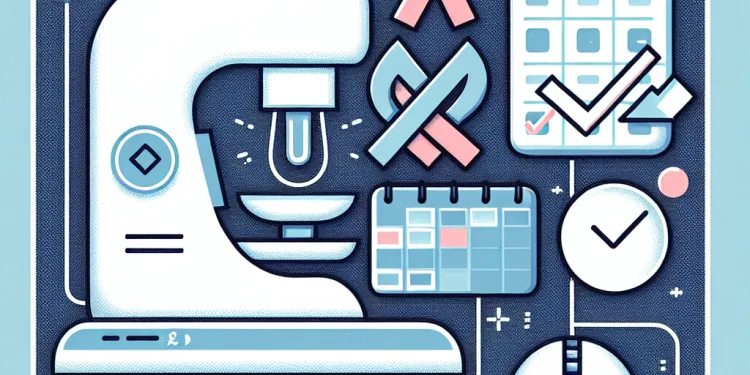
How do I book a mammogram?
Relevance: 90%
-

How reliable are mammograms?
Relevance: 90%
-
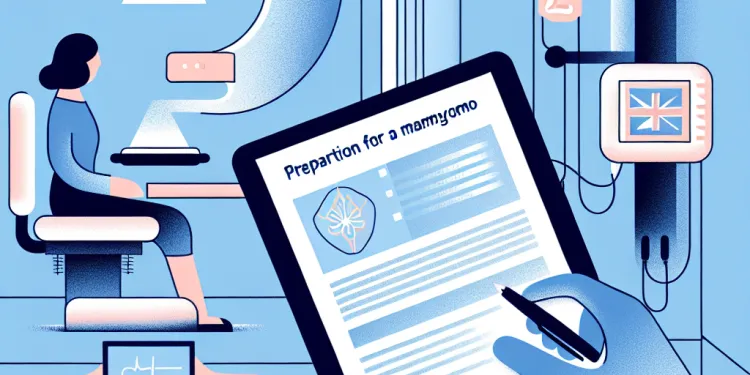
How do I prepare for a mammogram?
Relevance: 90%
-

Are mammograms free on the NHS?
Relevance: 89%
-
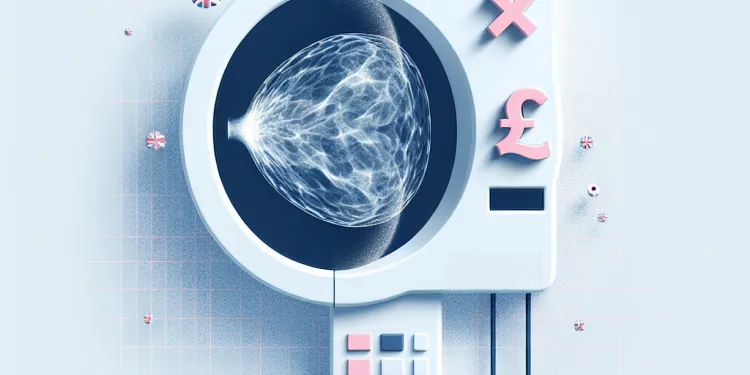
What happens during a mammogram?
Relevance: 87%
-

What are the benefits of regular mammograms?
Relevance: 86%
-
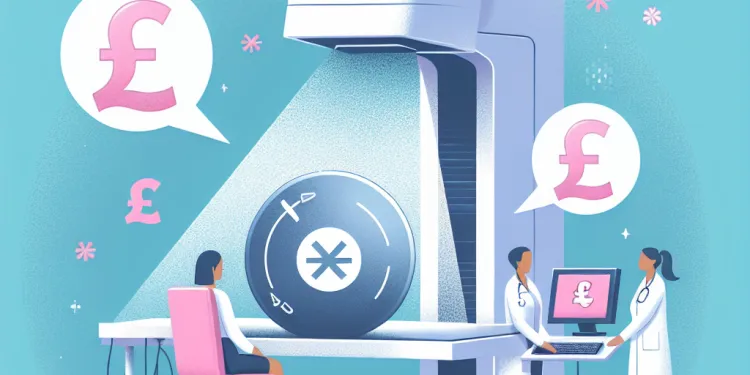
Are there any risks associated with mammograms?
Relevance: 86%
-

Can men have mammograms?
Relevance: 85%
-

What if my mammogram results are abnormal?
Relevance: 85%
-

How often should I get a mammogram?
Relevance: 83%
-
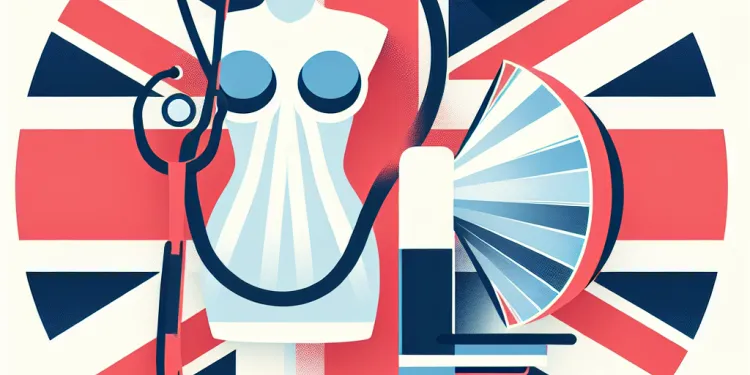
Can I have a mammogram if I have breast implants?
Relevance: 81%
-
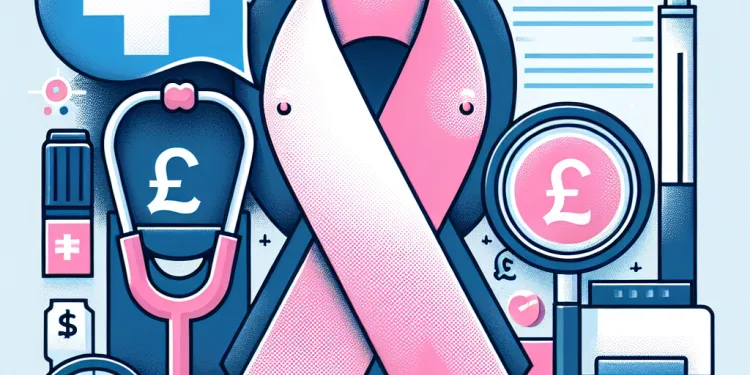
At what age should I start having mammograms?
Relevance: 79%
-

Tower Hamlets breast screening programme
Relevance: 42%
-

NHS breast cancer screening
Relevance: 42%
-

How long does a mammogram take?
Relevance: 36%
-
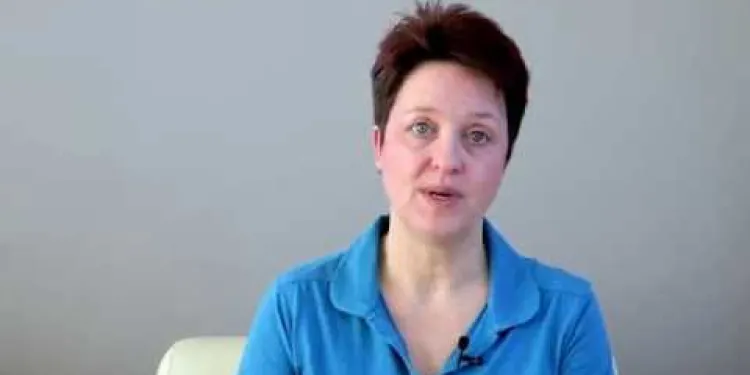
Other Things You Need to Know About Breast Screening
Relevance: 33%
-

Breast cancer: testing and treatment | NHS
Relevance: 32%
-
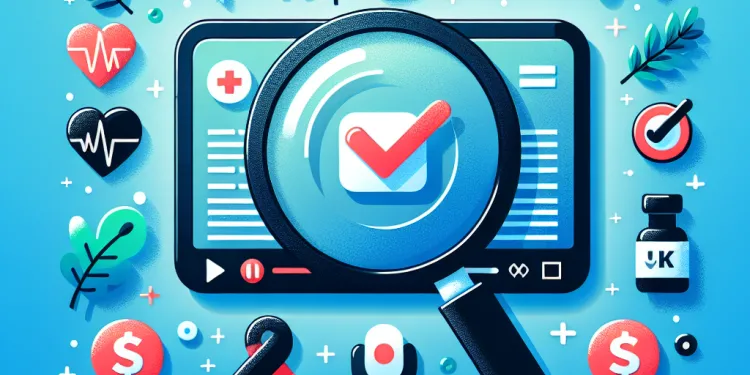
Health Screenings You Should Know About
Relevance: 30%
-

I've found a lump in my breast - What happens next? The breast diagnostic clinic
Relevance: 27%
-
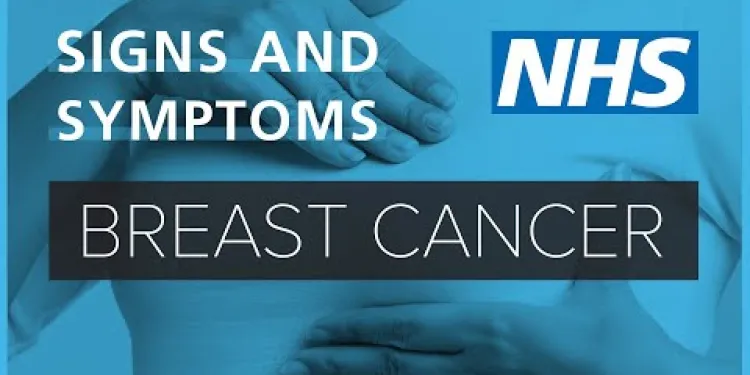
About Breast cancer - signs and symptoms | NHS
Relevance: 26%
-
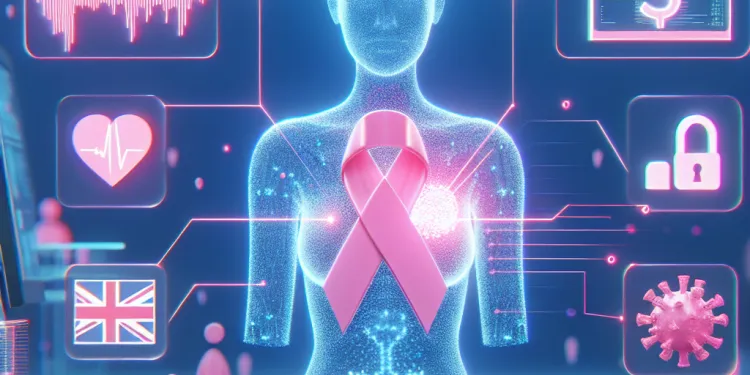
AI Breast Cancer Screening in the UK
Relevance: 23%
-
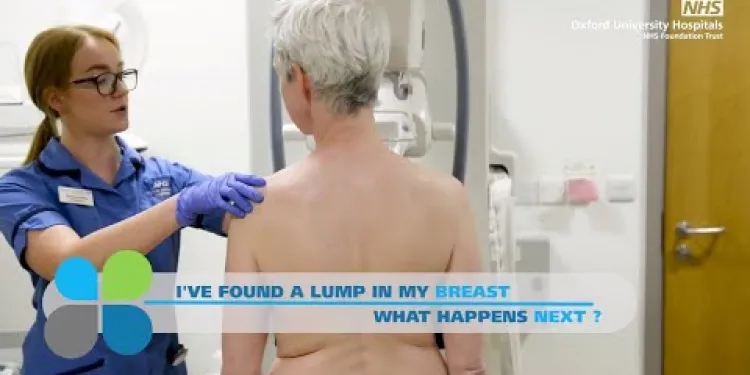
I've found a lump in my breast - What happens next? The breast diagnostic clinic
Relevance: 21%
-

Treating breast pain | United Lincolnshire Hospitals NHS Trust
Relevance: 15%
-

Will the test affect my menstrual cycle?
Relevance: 14%
-
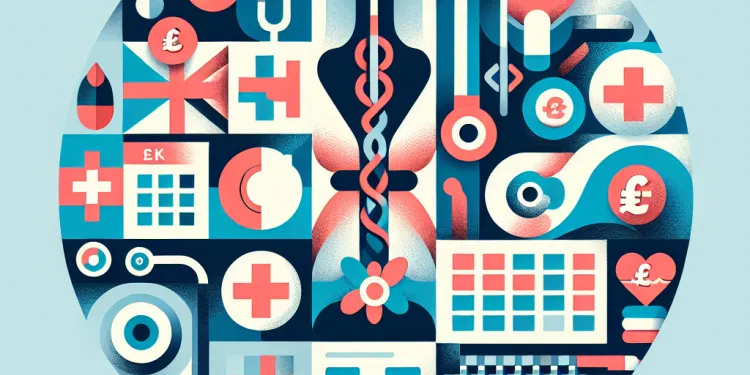
Can the test be performed during my menstrual period?
Relevance: 13%
-

What dosage of aspirin is considered effective for cancer prevention?
Relevance: 12%
-
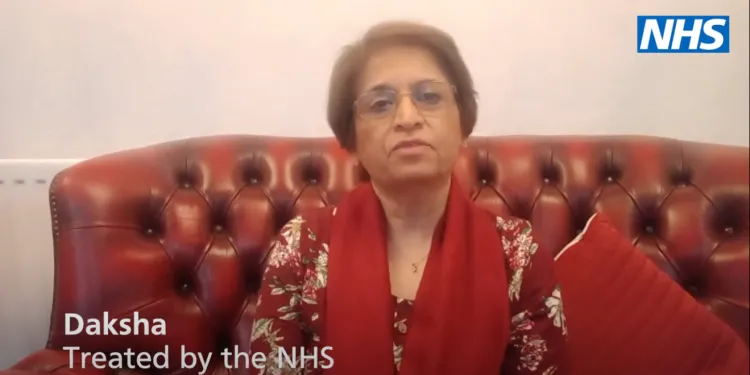
What is Cancer?
Relevance: 8%
-

Worried about signs that could be cancer? Contact your GP practice | NHS
Relevance: 6%
Mammograms: A Vital Tool in Breast Cancer Detection
What is a Mammogram?
A mammogram is a specialized medical imaging technique used to screen for and diagnose breast cancer. It utilizes low-dose X-rays to create detailed images of the breast tissues, allowing for the detection of abnormalities that may not be palpable during physical examination. Routine mammograms are essential for early cancer detection, significantly improving treatment outcomes and survival rates.
Who Should Get a Mammogram?
In the United Kingdom, the NHS Breast Screening Programme offers free mammograms to women aged 50 to 70 every three years. Women over 70 are also eligible for screening and can request an appointment through their GP. For those with a higher risk of breast cancer, such as individuals with a family history of the disease, earlier and more frequent screenings may be recommended by healthcare professionals.
Preparing for a Mammogram
On the day of the mammogram, it is advisable to avoid using deodorants, perfumes, or lotions under the arms or on the breasts, as these substances can affect the accuracy of the images. Wearing a two-piece outfit can make the process more convenient, as you will only need to remove your top during the procedure. It is also important to inform the radiographer if you are pregnant or breastfeeding.
The Mammogram Procedure
During the mammogram, a trained radiographer will position one breast at a time on the X-ray machine's platform. The breast is then compressed with a paddle to spread out the tissue and provide a clearer image. While some discomfort may be experienced, the compression only lasts a few seconds. Typically, two images of each breast are taken, and the entire procedure takes about 20 minutes.
Understanding Mammogram Results
Results from the mammogram are usually available within two weeks. A normal result means that no abnormalities were detected, and you will be invited for routine screening again in three years. If unusual findings are observed, further tests such as additional mammograms, ultrasound, or a biopsy may be required to confirm the diagnosis. It's important to remember that abnormal results do not always indicate cancer.
The Importance of Routine Screening
Early detection is key to the successful treatment of breast cancer. Regular mammograms can detect changes in breast tissue up to three years before they are felt by the patient or healthcare provider. This early intervention can dramatically improve treatment options and survival rates. Women are encouraged to participate in routine screening and to report any changes in their breasts to their GP promptly.
Mammograms: How They Help Find Breast Cancer
What is a Mammogram?
A mammogram is a special kind of picture that doctors take to look inside the breasts. It uses a small amount of X-ray to check for signs of breast cancer. Having a mammogram can help doctors find cancer early, which makes it easier to treat and helps people get better faster.
Who Should Have a Mammogram?
In the UK, women aged 50 to 70 can get free mammograms every three years from the NHS. Women older than 70 can also have them, but need to ask their doctor. If someone in your family had breast cancer, you might need to start having mammograms sooner and more often. Talk to your doctor to find out what's best for you.
Getting Ready for a Mammogram
On the day of the mammogram, don't use deodorant, perfume, or lotion under your arms or on your breasts because they can affect the images. Wear clothes that are easy to take off on the top half, like a top and trousers, as you only need to take off your top. Tell the person doing the test if you are pregnant or breastfeeding.
What Happens During a Mammogram?
During the mammogram, a special technician will help you place one breast at a time on a platform. Then, a small paddle will press on the breast to make it flat, which can feel a bit uncomfortable, but it only lasts a few seconds. The technician will take two pictures of each breast, and the whole test takes about 20 minutes.
Getting Your Mammogram Results
You will usually get your mammogram results in about two weeks. If the test is normal, it means nothing unusual was found, and you'll be invited again in three years. If something looks different, you may need more tests like another mammogram, an ultrasound, or a biopsy to find out more. Remember, a different result doesn't always mean it's cancer.
Why Regular Mammograms are Important
Finding breast cancer early makes treatment easier and improves chances of survival. Regular mammograms can find changes in the breasts up to three years before they can be felt. Women are encouraged to have regular mammograms and tell their doctor about any changes in their breasts as soon as possible.
Frequently Asked Questions
What is a mammogram?
A mammogram is a specific type of breast screening that uses X-ray images to look for signs of breast cancer.
At what age should I start having mammograms?
In the UK, women are usually invited for their first mammogram between the ages of 50 and 53. However, those with a higher risk may start earlier.
How often should I get a mammogram?
Women aged 50 to 70 are invited for a mammogram every three years as part of the NHS Breast Screening Programme.
How do I prepare for a mammogram?
On the day of the exam, avoid using deodorants, perfumes, or powders, as these can appear on the X-ray and affect the results.
Is a mammogram painful?
Some women find mammograms uncomfortable or slightly painful, but the discomfort usually lasts only a few seconds.
How long does a mammogram take?
The entire mammogram procedure typically takes about 30 minutes, with the actual compression of the breast taking only a few seconds.
What happens during a mammogram?
During a mammogram, the breast is compressed between two plates to spread the tissue apart and take clear X-ray images from different angles.
Are there any risks associated with mammograms?
Mammograms involve a very small amount of radiation, but the benefits of detecting breast cancer early generally outweigh the risks.
Can I have a mammogram if I have breast implants?
Yes, but it is important to inform the radiographer about the implants as extra images may be needed.
What if my mammogram results are abnormal?
An abnormal result doesn't necessarily mean cancer. You may be asked to come back for additional tests such as another mammogram, ultrasound, or biopsy.
How reliable are mammograms?
Mammograms are effective but not perfect. They miss some cancers and sometimes produce false positives. Regular screening and being breast-aware are important.
What are the benefits of regular mammograms?
Regular mammograms can detect breast cancer early, often before any symptoms appear, which can increase the chances of successful treatment.
Can men have mammograms?
While mammograms are primarily used for women, men can also have mammograms if there is a need, such as detecting abnormalities in the breast tissue.
How do I book a mammogram?
Women registered with a GP are automatically invited for screening. If you miss your appointment, contact your local breast screening unit to book a new one.
Are mammograms free on the NHS?
Yes, mammograms are free as part of the NHS Breast Screening Programme for women aged 50 to 70.
What is a mammogram?
A mammogram is a special picture of the inside of your breast. Doctors use it to check for lumps or changes. It helps keep your breasts healthy.
If you find this hard to read, ask someone you trust for help. You can also use tools like a text-to-speech app to read it out loud.
A mammogram is a test that takes pictures of the inside of your breasts using X-rays. It helps doctors check for signs of breast cancer.
When should I start having breast checks with a mammogram?
In the UK, women usually get their first breast check (mammogram) when they are between 50 and 53 years old. Some people might get it earlier if they are more at risk.
How often should I have a breast check (mammogram)?
Mammograms help doctors check your breasts for lumps or changes. It is a special picture taken by a machine.
Most women get a mammogram every 1 or 2 years. This is often for women who are 50 years old and older.
If you are younger or have questions, ask your doctor. They will help you know what is best.
You can use a calendar or phone reminder to help you remember your appointment.
Women who are between 50 and 70 years old get a letter to have a breast check every three years. This is called a mammogram. It is part of a health program to help find breast cancer early.
How do I get ready for a mammogram?
A mammogram is a special picture of the inside of your breast. Here is how you can get ready for it:
- Wear a comfortable top: Choose a top that is easy to take off. You will need to remove it for the test.
- Don’t use deodorant: On the day of the test, do not use deodorant, powder, or lotion on your breasts or underarms. These can make it hard to see the pictures clearly.
- Tell the nurse if you are nervous: It is okay to feel nervous. The nurses can help make you feel better.
- Ask questions: If you don’t understand something, it’s okay to ask the nurse to explain it.
If you find reading difficult, you can ask a friend or family member to help you understand these steps. You can also use an audio tool to read the steps out loud for you.
On the day of the test, do not use sprays, smells, or powders. These can show up on the X-ray and change the results.
If you need help reading, you can ask someone to read it out loud. You can also use apps to read the words to you.
Does a mammogram hurt?
Some women think mammograms don't feel nice, or they hurt a little bit. But it only feels bad for a few seconds.
How long does a mammogram take?
A mammogram is a special picture of the inside of your breast.
The test usually takes about 20 minutes.
Your breasts might feel squished for a few seconds.
If you feel worried, you can bring a friend or family member.
The whole mammogram test takes about 30 minutes. The breast is only squeezed for a few seconds.
What happens during a mammogram?
A mammogram is an X-ray of the breast. Here is what happens:
1. You stand in front of a special machine.
2. A nurse helps you place your breast between two plates on the machine.
3. The plates press your breast to make it flat. This can feel a bit tight.
4. The machine takes an X-ray picture of your breast.
5. The nurse might take pictures from different angles.
6. The X-ray pictures help doctors see if everything is okay.
Tips to help you:
- Relax and take deep breaths.
- Ask the nurse to explain each step.
- Bring a friend or family member for support.
When you have a mammogram, your breast is gently squeezed between two plates. This helps spread the breast tissue so the pictures are clear. The doctor takes X-ray pictures from different sides.
Are there any risks with getting a mammogram?
A mammogram is a special kind of X-ray that looks at breasts. It helps doctors find problems. But, like everything, it has some risks.
Here are some things to know:
- A mammogram uses a small amount of X-ray radiation. Too much radiation can be bad, but the amount in a mammogram is safe.
- Sometimes, a mammogram can find a problem that isn’t real. This can make someone worried when they don’t need to be.
- On the other hand, a mammogram might not see a problem that is there. This can happen, but it’s rare.
It’s important to talk to a doctor and ask questions. You can also use tools to help. Pictures, videos, and simple explanations can make things clearer.
Mammograms use a tiny bit of radiation, but they help find breast cancer early. This is usually safer and more helpful than the tiny risk from the radiation.
To make reading easier, you can:
- Use a ruler or your finger to follow the words.
- Read out loud or ask someone to read with you.
- Break the text into small parts and read a little at a time.
Can I have a breast scan if I have breast implants?
Yes, you can have a breast scan if you have breast implants. A breast scan is a special picture of the inside of your chest to check for any problems.
Tell the doctor or nurse you have breast implants. They will use a safe way to take the picture. The breast scan might take a little longer because of the implants.
Helpful tip: If you feel worried or have questions, talk with your doctor. They can help you understand what will happen and make you feel better.
Yes, but it's important to tell the person who takes the X-ray about the implants. They might need to take more pictures.
What happens if my mammogram results are not normal?
Don't worry if your mammogram results are not what you expected. It doesn't always mean there is a problem. It just means the doctors want to look more closely.
Here are some things you might do next:
- Talk to your doctor. They can explain what the results mean.
- You might need more tests. These help doctors understand what's happening.
- Bring a friend or family member to appointments. They can give support and help remember information.
Remember, you are not alone. Doctors and nurses are there to help you.
An odd result doesn’t always mean you have cancer. You might need to come back for more tests. These tests could be another breast x-ray, an ultrasound, or a biopsy.
Are mammograms good at finding breast problems?
Mammograms, which are tests to check for breast cancer, are good but not perfect. Sometimes they can't find cancer. Other times, they say there is cancer when there isn't. It's important to get these tests regularly and know how your breasts normally look and feel.
Why are regular breast checks good?
Regular breast checks, called mammograms, can help find breast cancer early. When cancer is found early, it is easier to treat. Breast checks can help keep you healthy.
If you have trouble reading this, you can ask someone to read it to you or listen to it using text-to-speech tools.
Getting a mammogram can help find breast cancer early. This is often before you feel any changes. Finding it early can help doctors treat it better.
Can men have mammograms?
Yes, men can have mammograms. A mammogram is a special X-ray for checking breasts.
Here’s what you need to know:
- Men have breast tissue, just like women.
- Mammograms help find problems in breast tissue.
- Doctors might ask a man to have a mammogram if they think there is a problem.
If you have questions or need help, ask your doctor or a nurse. They can explain things and help you feel better.
Mammograms are tests used to check for changes in the breast. They are usually for women, but men can have them too if needed. This can happen if a doctor thinks there might be something unusual in a man’s breast.
How can I make an appointment for a breast check-up?
Here is a simple way to make an appointment for a breast check-up:
- Ask your doctor for advice. They can help you.
- Call the clinic or hospital to make an appointment.
- Tell them you need a breast check-up.
Here are some helpful things to do:
- Write down any questions you have before you call.
- Use a calendar to remember the date of your appointment.
- Take someone with you to the appointment if that makes you feel better.
If you are a woman who goes to a doctor, you will get a letter to come for a check-up. If you cannot go on that day, call the breast screening place near you to get a new date.
Do you have to pay for mammograms on the NHS?
Yes, women who are 50 to 70 years old can get a free breast check, called a mammogram, from the NHS.
Useful Links
- Ergsy carfully checks the information in the videos we provide here.
- Videos shown by Youtube after a video has completed, have NOT been reviewed by ERGSY.
- To view, click the arrow in centre of video.
- Most of the videos you find here will have subtitles and/or closed captions available.
- You may need to turn these on, and choose your preferred language.
- Go to the video you'd like to watch.
- If closed captions (CC) are available, settings will be visible on the bottom right of the video player.
- To turn on Captions, click settings .
- To turn off Captions, click settings again.
More Items From Ergsy search
-

Mammograms
Relevance: 100%
-

What is a mammogram?
Relevance: 95%
-

Is a mammogram painful?
Relevance: 94%
-

How do I book a mammogram?
Relevance: 90%
-

How reliable are mammograms?
Relevance: 90%
-

How do I prepare for a mammogram?
Relevance: 90%
-

Are mammograms free on the NHS?
Relevance: 89%
-

What happens during a mammogram?
Relevance: 87%
-

What are the benefits of regular mammograms?
Relevance: 86%
-

Are there any risks associated with mammograms?
Relevance: 86%
-

Can men have mammograms?
Relevance: 85%
-

What if my mammogram results are abnormal?
Relevance: 85%
-

How often should I get a mammogram?
Relevance: 83%
-

Can I have a mammogram if I have breast implants?
Relevance: 81%
-

At what age should I start having mammograms?
Relevance: 79%
-

Tower Hamlets breast screening programme
Relevance: 42%
-

NHS breast cancer screening
Relevance: 42%
-

How long does a mammogram take?
Relevance: 36%
-

Other Things You Need to Know About Breast Screening
Relevance: 33%
-

Breast cancer: testing and treatment | NHS
Relevance: 32%
-

Health Screenings You Should Know About
Relevance: 30%
-

I've found a lump in my breast - What happens next? The breast diagnostic clinic
Relevance: 27%
-

About Breast cancer - signs and symptoms | NHS
Relevance: 26%
-

AI Breast Cancer Screening in the UK
Relevance: 23%
-

I've found a lump in my breast - What happens next? The breast diagnostic clinic
Relevance: 21%
-

Treating breast pain | United Lincolnshire Hospitals NHS Trust
Relevance: 15%
-

Will the test affect my menstrual cycle?
Relevance: 14%
-

Can the test be performed during my menstrual period?
Relevance: 13%
-

What dosage of aspirin is considered effective for cancer prevention?
Relevance: 12%
-

What is Cancer?
Relevance: 8%
-

Worried about signs that could be cancer? Contact your GP practice | NHS
Relevance: 6%


